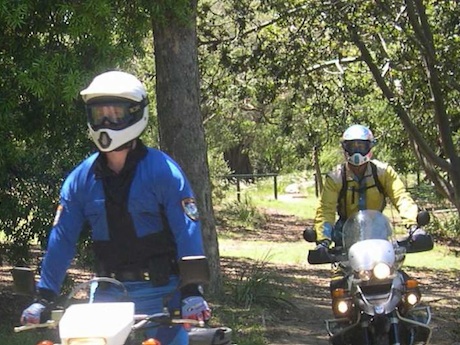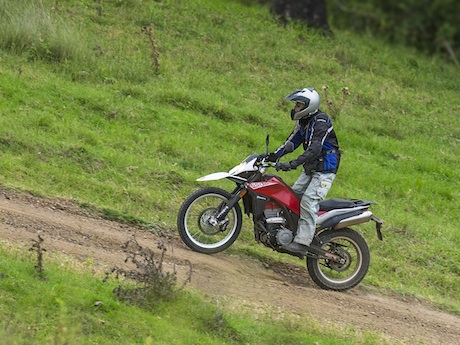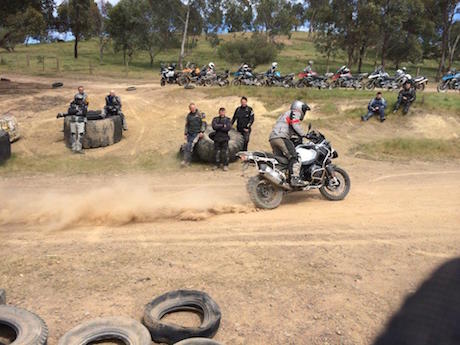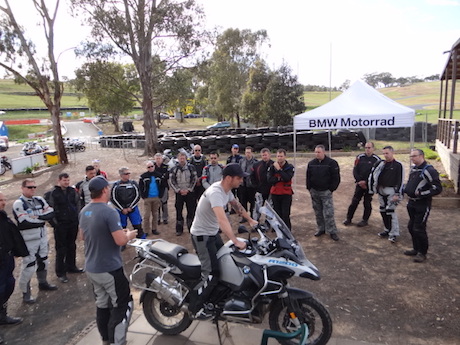Many rider trainers have claimed that standing up on a motorcycle lowers the centre of gravity and makes the bike more stable, especially over rough, loose and slippery surfaces.
The statement about lowering the centre of gravity has caused a lot of argument among riders and those schooled in the laws of physics.
Riders claim the point of contact with the bike is lowered from the seat to the footpegs, therefore lowering the centre of gravity, while physics students say that standing up actually raises the centre of gravity because the rider is so much higher than the bike.
These are simplified explanations for the two arguments, so we asked Former Triple 8 engineer and now race engineer for the winning Porsche Le Mans team, Jeromy Moore, of Brisbane.
“If you consider both the bike and the rider as a rigid object then no. It raises the centre of gravity,” he says.
“However, when standing you are not a fixed object on the bike.
“The main point of standing on a dirt bike is the ability to quickly transfer the rider’s weight from one peg to the other which makes the bike respond quickly.
“It gives the rider more control over the bike’s mass which gives the perception of a lower centre of gravity when, in fact, it is the opposite.”
There are other good reasons to stand up while rid9ing on rough surfaces.
ONE
The most important reason for standing up on rough terrain is that it increases your vision ahead. That allows you to avoid obstacles such as potholes, rocks or mud, or to pick a better path so you don’t end up in the deepest rut, or to see whether there are oncoming vehicles over the crest of a hill.
TWO
Your legs become “part of the suspension”, so a sudden and large bump doesn’t jolt you off the bike as your legs absorb some of the impact. Remember to keep your knees slightly bent.
THREE
It divorces the jostling of the bike from your body weight. If you hit a rock or momentarily lose traction – such as in a water crossing – and the bike kicks sideways, it is mainly the bike that is moved, not you as well. Therefore you are less likely to be bucked off.
FOUR
A rider sitting on a bike tends to overreact to every sideways movement of the bike. Standing up divorces you from all these minor movements so you aren’t worried by every buck and weave. It also allows the bike to do its own thing without the distributing influences of unnecessary and reactionary handlebar corrections.
FIVE
Standing also gives you extra control over the bike with your feet.
Try standing up on your bike and concentrating on not putting any steering or counter-steering pressure on the handlebars.
Then move your right knee slightly forward. This puts pressure on the left footpeg. Notice what happens. The bike will swerve to the left.
I’ve seen the video where a rider holds a bar on the tank so there is no steering input and tries to steer the bike by leaning. It hardly moves.
If they tried holding on to the tank while standing and moving their weight on the footpegs they would find the bike does turn. Unless you have a handle on your bike, I wouldn’t suggest you try this as the bike will swerve quite suddenly, such is the effect of pressure on the footpegs.
Sitting down and putting pressure on the footpegs doesn’t have near as much effect as when you stand and put your whole body weight into a footpeg.
You can use this pressure on the footpegs for steering the bike, but also for adding traction when the tail is sliding out. (Place you weight on the footpeg on the side the rear wheel is sliding toward.)
Steering with your feet also means less handlebar input is needed and less reliance on front wheel traction.
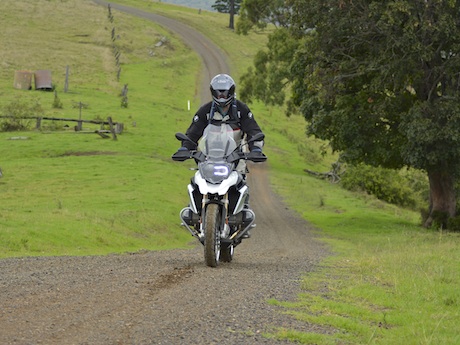
If you do stand up, you may need to adjust the clutch and brake levers for the different angle of your wrists, and the gear shift and foot brake levers for the angle of your foot. You should also adjust at least one mirror for better rear vision.
WARNING
Be aware that in some jurisdictions, standing up on the bike may be illegal.
Most Australian states now allow the practice, but be aware that it is specified that it is only for negotiating rough or slippery surfaces.
